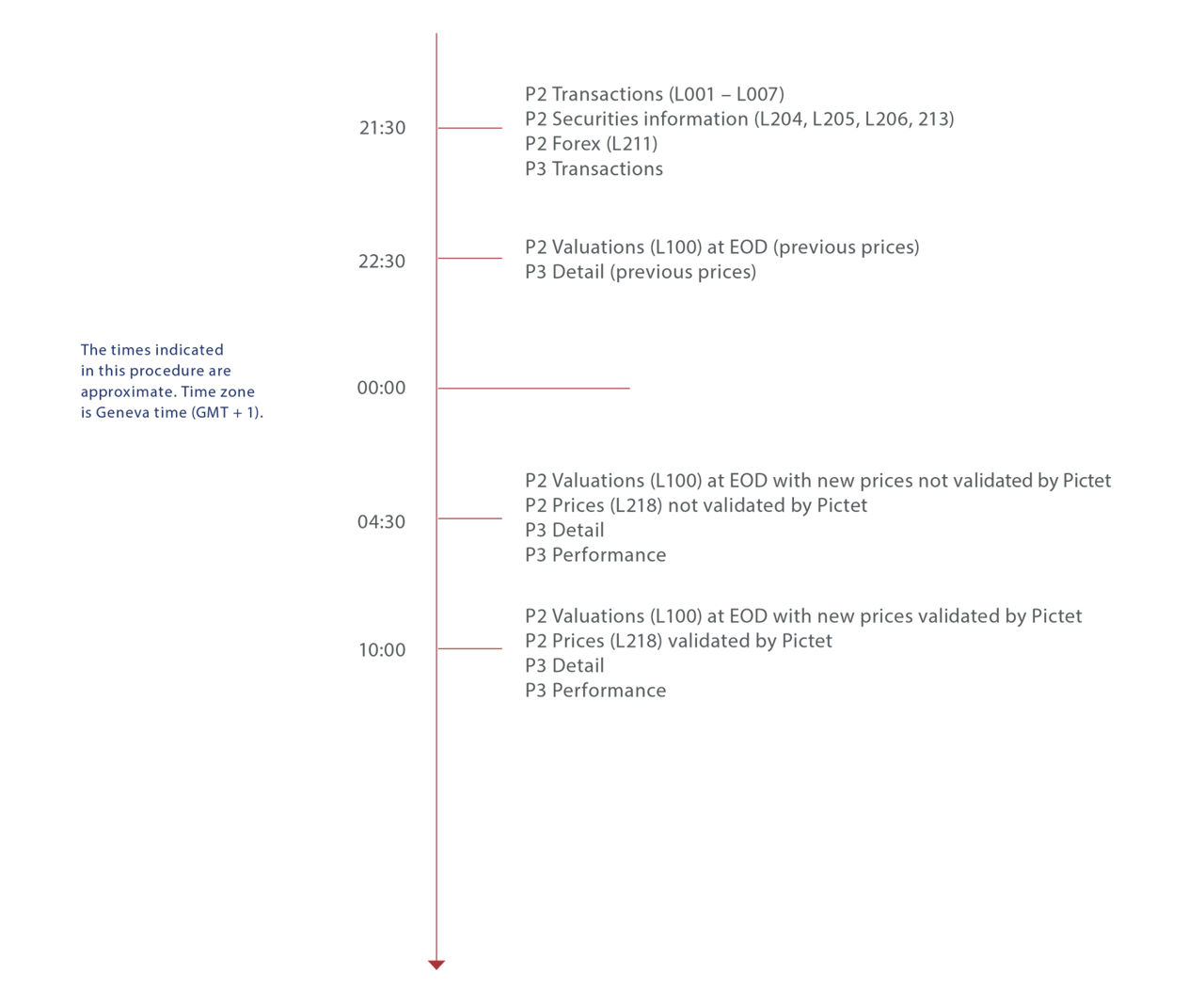PicLink
What is PicLink?
PicLink data flows were designed so that clients could receive account-related information such as advices, statements and other details by electronic means. These are proprietary Pictet formats and are mainly intended to help in the production of interfaces to connect with commercially available or client-developed Portfolio Management Systems (PMS).
Which PicLink format are available?
PicLink II
PicLink II is composed of various structured ASCII files. It has been designed with software interfaces in mind. It is comprehensive, containing in principle all the information required to create an interface, however complex. The types of file available are as follows:
- L001 to L007: files contraining dayling transactions
- L100: file file contraining the valuation
- L200 to L218: master data files, such as descriptions of securities, rates, exchange rates, etc.
PicLink III
The PicLink III format was created to meet the needs of clients that do not have complex IT infrastructure or which do not want to design an interface. PicLink III is a CSV file, formatted to open directly in Excel so that the data can be processed quickly and easily or be incorporated into other reports. This format is not suited to complex interfaces. The types of file available are as follows:
- P3PERF (PicLink III Performance): with one line representing a portfolio and showing the items making up the total return on each of the client’s portfolios.
- P3DET (PicLink III Detail): shows each financial asset in the portfolio in detail. As with the other two file types, several client portfolios can be hosted in the same file.
- P3TRANS (PicLink III Transaction): gives a list of transactions carried out on the previous day with regard to the client’s portfolios.
PicLink II has existed since 1979 and PicLink III since 2000. As can be seen, PicLink (which is used both internally and externally to connect discrete systems), has been around for a long time at Pictet. This long lifespan is one of its main advantages. It is durable, stable over time and has been updated in tandem with IT systems and banking industry requirements.
How does a Piclink interface project work?
Pictet does not produce interfaces for its clients.
However, we will help throughout the design and implementation process. During the testing and live phases, a support team is available to coordinate the various actions and answer questions about the data being made available. Responsibility for execution is shared between the client and its service provider.
Project initialisation
This phase should be handled in project mode, bringing together from the outset all of the main stakeholders: client, service provider and Pictet. This will allow for maximum clarity in regard to the following objectives:
- Define project scope (what do we want to automate?)
- Present the product for which the interface is needed
- Present the PicLink interface
- Describe the data-transfer method
- Define project phases, remits and organisation
Data mapping
This phase of the project is essential. It is handled by Pictet and the entity responsible for producing the interface. At this point, a meeting is vital for sharing experiences and the various scenarios connected with the areas to be interfaced and the way in which the data are to be transferred.
Producing the interface
Pictet is on hand to provide advice and support while the interface is being produced by the service provider or the client.
Testing as well as the decision to ‘go live’ fall under the client’s remit.
End-of-project review
This session between all stakeholders takes place either just before or just after going live. Its aims are as follows:
- Review the interface
- Deal with pending questions and unresolved issues
- Review the recently completed project
- Organise taking the interface live and monitoring it in production environment
- Discuss possible next steps, if the project has been broken down into phases
For more information
You can find more detailed information and the technical documentation in the below annexes:
The receipt and use of market data supplied by Pictet as part of its services are subject to limitations and conditions dictated by the data providers, which may require obtaining a user licence, among other obligations. These conditions and limits are detailed in the “Market Data Specific Terms and Conditions” available on the website www.pictet.com/market-data-specific-conditions. You are reminded of the obligations incumbent on you under said terms and conditions.
The additional terms imposed by the data providers may be found under the following link: www.pictet.com/3rd-party-data-providers.
We have created a short video to highlight the key principles of market data license agreements. If you have any questions, please feel free to contact your client relationship manager.
We have created a short video to highlight the key principles of market data license agreements. If you have any questions, please feel free to contact your client relationship manager.



